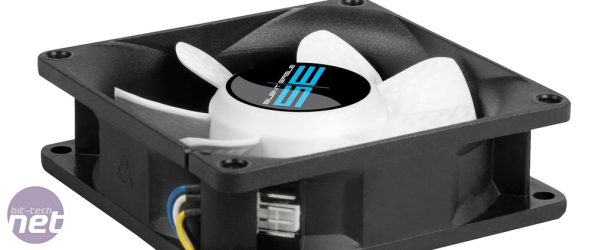
Cooling with No Fans
Before getting started on the testing proper, we wanted to see what would happen if we ran our tests without any fans in the case. You’d obviously be mad to attempt to run such a setup at home, particularly with an overclocked CPU and GPU, but the results would give us an interesting base line from which to work.It’s here too that the blanking plates of the Define R3 come in useful, as we could simulate what impact having a case with lots of venting in it has on temperatures.
As you can see then from the graph above, running a computer without any case fans really isn’t a very smart idea. With the vents of the case blocked off, our CPU actually hit its 99oC thermal threshold (76oC delta T), meaning it had to manually clock itself down to avoid damaging itself. Of more interest however is what happened when we removed the blanking plates from the roof and side panel mounts of the case.
With the vents open and air able to enter the case, the CPU temperature dropped by a whopping 12oC - an amazing amount for saying that we hadn’t actually added any more cooling apparatus to the case. This large drop was largely due to the fact that the CPU cooler was now able to get some air, as the front of the two roof vents is close enough to the CPU cooler to act as an intake.
Opening up the roof vents also allowed air to escape from the case through convection - there was an easily noticeable stream of hot air rising up through the rear of the two 120mm vents in the roof of the case.

It is possible to run a PC without any case fans, but we wouldn't recommend it
The GPU and chipset benefitted too from having the blanking plates removed as the GPU cooler could now draw air in through the 120mm side panel fan mount. This resulted in a 4oC drop in the temperature of our GPU, with the added air movement also leading to a 7oC drop in the temperature of the chipset.
Obviously it’s not a massive surprise that having more vents in a case leads to lower temperatures inside the case, but it is interesting to see just how much of an effect these open vents can have. The flip side of this of course is that open vents allow noise to escape the case and dust to enter it, so, as with most things, there is a balance to be struck.

MSI MPG Velox 100R Chassis Review
October 14 2021 | 15:04








Want to comment? Please log in.